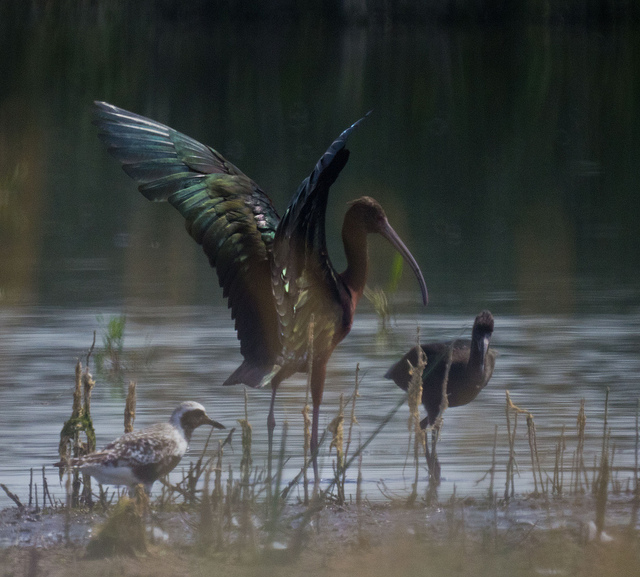Posted by Dan Arndt
One of the advantages (and disadvantages) of having my long lens unavailable for any length of time is the creativity that I’m allowed in the scenic and wide angle shots as opposed to the tight close-ups I’ve grown to prefer in the past year and a bit. I’ve also noticed that it seems like we always go to the same locations when I don’t have my long lens!
This week’s location, Beaverdam Flats, is just one such location.
Starting at the parking lot, we explored the trees nearby and found our only Golden-crowned Kinglet and Red-breasted Nuthatches of the day. Walking down the slope to the river we were greeted by a flyover of a juvenile Bald Eagle, and great views of both the river as a whole, as well as the frost that had accumulated overnight from the freezing fog.
The sheer number of Canada Geese and Mallards is hard to explain, and we even had a (relatively) small flock of Ring-billed Gulls on the gravel bar as well. Intermixed with the larger waterfowl were no small number of Buffleheads, Common Goldeneye, and even a Redhead or two for good measure.
We lucked out again and found a lone Barrow’s Goldeneye in amongst the throng, and were even a little more surprised by a lone, late migrating American Coot on the far bank.
As we followed the bend of the river around to the north side of the park, then trudged through back to the hilltop, we were greeted by our last new species in the park, this pair of Tundra/Trumpeter Swans. I suspect they’re Trumpeter Swans based on their proportions, but I could be wrong.
As we returned to our vehicles, we decided to go take a look in on Pat Bumstead’s amazing yard list, and specifically, to see the Mourning Doves. These two were found across the street roosting in a tall spruce.
Have a great week, and good birding!




























































































